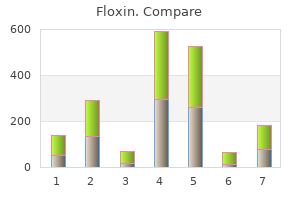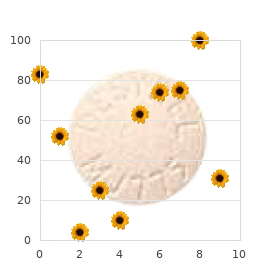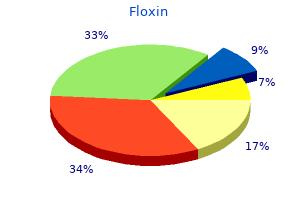Floxin
"Buy generic floxin pills, antibiotic used for lyme disease".
By: A. Mine-Boss, M.B. B.CH. B.A.O., M.B.B.Ch., Ph.D.
Medical Instructor, Rutgers New Jersey Medical School
An important component of working or short-term memory antibiotics for uti buy floxin 200mg, as proposed by Baddeley bacterial endospore buy floxin american express, is a visuospatial scratch pad antibiotics for sinus infection without penicillin cheap 200 mg floxin with amex. This ``structure' encodes the memory of object locations antibiotic prophylaxis for dental procedures best buy floxin, a memory that may last only a few seconds before it is forgotten or rehearsed and consolidated into longterm memory. Like short-term verbal memory, short-term memory for object locations is subject to interference, giving credence to the notion of a short-term spatial memory system. In humans, there is additional lateralization of spatial memory, given the specialization of the right cerebral hemisphere for spatial processing. Neural Encoding of Spatial Memory Neuroimaging studies in humans suggest that both the right posterior parietal cortex and the right lateral 348 Memory, Spatial prefrontal cortex are important in the processing of spatial working memory. However, the right medial temporal lobe, including the hippocampus, has been implicated in long-term spatial memory. Behavioral studies of memory for object locations typically require subjects to study groups of stimulus items located on an array and then to recall and replace those objects after a delay interval. This technique was developed by Brenda Milner in the 1980s while studying patients who underwent unilateral temporal lobectomies for the treatment of epilepsy. Patients were asked to view 16 toy objects laid out on an array and to estimate a price for each object. After a delay, the subjects were then asked to recall each object from memory and then to place each object in its original location. After a long delay, both the right and the left lobectomy patients were impaired on the object recall task, with the left patients performing worse than the right patients. In the object location task, however, the right lobectomy patients were severely impaired, whereas the left lobectomy patients performed at normal levels. Although spatial memory impairment only occurs with right medial temporal lobe damage, deficits in visual memory and object recall have also been demonstrated, making it difficult to completely dissociate spatial memory from other types of memory. Long-term spatial memory appears to be dissociable among cerebral hemispheres, even within the same temporal lobe. Nunn and colleagues replicated the Milner study but included a temporal titration procedure. Here, the delay between viewing the array and recall was varied for the right and left lobectomy groups. In this way, they could match performance on the object location (spatial) memory function with the object recall (nonspatial) memory function. Only the right temporal lobectomy patients were impaired on the spatial version of the task. Also at issue are the exact medial temporal structures involved in spatial memory and their relative roles. Although focal lesion studies have laid the groundwork for models of hippocampal involvement in human spatial memory, they are flawed because control of lesion size is almost impossible, leading to variability within studies of the structures involved. This is alleviated somewhat by lesion analysis, a procedure measuring the size of the lesions, and only subjects with specific lesion measurements are included in the study. Functional neuroimaging studies have also been utilized to study spatial memory, but different results have been obtained from different laboratories and/or different techniques (positron emission tomography and functional magnetic resonance imaging). The cognitive/behavioral research is generally consistent, however, with the view that the right hippocampus is specialized in some way for spatial memory, although it does not have an exclusive role in this capacity. This raises the issue of the independence of spatial memory from other types of memory. Even if spatial memory can be dissociated in this way, this does not mean that spatial memory is a separate memory system. For example, some argue that spatial memory may serve as the foundation for broad concepts such as episodic memory, whereas others argue that it is simply a subcomponent of the broader declarative memory system. These questions are at the forefront of an active area of research and are being pursued employing many techniques, including electrophysiological recordings in laboratory rodents and humans, genetic and pharmacological lesions in rodents, and neuroimaging studies in humans. Evidence from Animal Models of Spatial Memory Data from nonhuman animals offer an important perspective on the nature of spatial memory. There are two complementary lines of evidence, one from patterns of space use in wild animals and the other from neurophysiological recordings from laboratory rodents orienting in space.
Teaching your child these types of boundaries will ensure fluid social encounters in the future antimicrobial yoga flooring cheap floxin 200mg on line, avoid embarrassing situations and will prevent them from getting into dangerous circumstances infection 10 days after surgery buy floxin 400 mg without prescription. Usually antibiotics for esbl uti order floxin us, children learn appropriate and inappropriate behaviours through discussion and social situations antibiotic resistance mechanisms in bacteria buy floxin us. Good touch is something that friends and family may do to show their affection for one another. A bad touch is something that feels wrong or uncomfortable, such as a stranger asking for a kiss (Goulstein, 2010). Social Changes 16 It is important that your child understands the difference between good touch and bad touch. Strategies to help your child deal with good touch verses bad touch the difference between good touch and bad touch should be discussed. It is important to explain to your child that a touch may be a good touch for one person, but the same touch may be a bad touch for someone else. For example, one person may like to be tickled (this is a good touch), whereas someone else may not enjoy being tickled (this is a bad touch). Modelling appropriate touching with peers and adults has also been reported to be helpful in establishing personal boundaries. For example giving your child a kiss goodnight Masturbation Management and Private verses Public Places Masturbation refers to the sexual stimulation of ones genitals, touching or rubbing private areas for sexual pleasure. Many males begin masturbating between the ages of 13 and 15 years (Better Health Channel, 2011). Masturbation is an uncomfortable topic when discussed with anyone, including parents, friends, or within someones own family. As Sex hormones become active during puberty; many adolescents begin to have pleasurable and excited feelings about their bodies. They may be difficult for your child to describe and they may be difficult for you to describe to your child. It is essential that you explain to your child that these feelings will happen at different times and in different ways for all boys and girls (Morris, 2008). Usually, parents with typically developing adolescents may not need to discuss the topic of masturbation with their son or daughter, because their son or Social Changes 17 daughter is able to understand the appropriate social cues associated with these behaviours (Haywood & Saunders, 2010). Typically, adolescents understand that masturbation is a private behaviour to be done in a private place. In addition, they commonly understand that these matters should not be discussed with everyone or in a public area. They may continue to discuss an uncomfortable topic despite the negative reactions of others (Morris, 2008). They might naturally start touching themselves in public and may not realize that it is wrong (Haywood and Saunders, 2010). Possible reasons for inappropriate masturbation include: - No structured routine and time made available for masturbation - Not enough education about privacy - Not enough opportunity during the day for privacy - There may be no locks on bedroom doors to provide privacy - Parents or siblings and other residents may not respect the privacy of another persons bedroom Strategies to help your child with private vs. Pictures or photos can be used as a way to visually demonstrate the difference between private and public places It may be beneficial to use videos in order to inform your child about the importance of privacy. Compare masturbating to another experience that he/she does by himself/herself in private, such as taking a shower or using the restroom. Private places should be described as ones bedroom or bathroom, where he/she is alone. Contrastingly, a public place should be explained as a place where other people reside. Teaching your child appropriate times and places to masturbate will be beneficial in order to ensure that he/she does not begin masturbating in public. You may wish to teach your child that private parts of the body are those we keep covered in public places. Moreover, it may be helpful to explain that touching private parts of the body is only done in a private place with the door closed. Social Changes It is important that your child understands public versus private places.
Purchase floxin overnight. Rapid antimicrobial susceptibility testing of urine samples.

We experience the visual operation of our brains as a rapid and effortless scanning of pictures moving in space and time antibiotic resistance food safety generic floxin 400 mg with visa. To our subjective view antimicrobial nasal spray best floxin 200mg, the brain appears to be primarily a device for the direct comparison of images bacteria zombie purchase genuine floxin on-line. We see the images as whole scenes with shape and style antibiotic resistant germs purchase 200mg floxin mastercard, not as collections of pixels. Our perception of continuously moving images does not prove that our brain is an analog device, but it makes this a plausible hypothesis. It is unlikely that a fundamental shift of our computing technology from digital to analog could occur within a time as short as thirty years. But if we look ahead further, for fifty or a hundred years into the future, such a fundamental shift becomes possible or even likely. While making plans for the near-term future, it would be wise to keep in mind the more adventurous possibilities that new discoveries in biology and neurology are likely to bring later. One possibility to be taken seriously is a complete change of databases from digital to analog data, making them more user-friendly to expert and nonexpert users. Understanding the full impact that artificial intelligence can have on health and health care is important. Understanding the opportunities and considerations can better prepare and inform developers and policy makers and promote the general welfare of health care consumers and the public. In what ways might artificial intelligence advance efforts to improve individual health, health care (care of individuals), and community health (health status of sub-populations)? What are the most high-value areas (example, reducing the cost of expensive treatments, prevention of mortality or morbidity in disproportionately affected populations, improvement in productivity due to better health, or focusing on risk mitigation where the impacted population is large) where artificial intelligence could be focused to contribute quickly and efficiently? How can the benefits of artificial intelligence applications be defined and assessed? What are the considerations for the data sources needed to support the development of artificial intelligence programs for health and health care? How does research in computational, statistical, and data sciences need to advance in order for these technologies to reach their fullest potential? What technology barriers may arise in the technology adoption associated with artificial intelligence for health and health care? What are the potential unintended consequences, including real or perceived dangers, of artificial intelligence focused on improving health and health care? What are the potential risks of artificial intelligence inadvertently exacerbating health inequalities? What workforce changes may be needed to ensure effective broad-based adoption of data-rich artificial intelligence applications? Development and Validation of a Deep Learning Algorithm for Detection of Diabetic Retinopathy in Retinal Fundus Photographs. Cheung, Shaun Sebastian Sim, Pok Chien Tan, Gavin Siew Wei Tan, and Tien Yin Wong, Journal of Diabetes Science and Technology 2016, Vol. Stumpe, Derek Wu, Arunachalam Narayanaswamy, Subhashini Venugopalan, Kasumi Widner, TomMadams, Jorge Cuadros, Ramasamy Kim, Rajiv Raman, Philip C. Blau & Sebastian Thrun, Dermatologist-level classification of skin cancer with deep neural networks, Nature, 42, 115, 2017, doi:10. Min, Computational Fluid Dynamics Applied to Cardiac Computed Tomography for Noninvasive Quantification of Fractional Flow Reserve, Journal of the American College of Cardiology, Vol. Clinical outcomes of fractional flow reserve by computed tomographic angiographyguided diagnostic strategies vs. A Case Study for Blockchain in Healthcare: "MedRec" prototype for electronic health records and medical research data. Pew Research Center, April, 2015, "The Smartphone Difference" Available at. A premature death is death before a specific expected age that could have been preventable. Doerr, Megan and Suver, Christine and Wilbanks, John, Developing a Transparent, ParticipantNavigated Electronic Informed Consent for Mobile-Mediated Research (April 22, 2016).


Nobody could have predicted the benefits that derived from the careful creation of the ImageNet database [99] bacteria on mars order 200mg floxin otc, and we conjecture that the expanded creation of similar high-quality databases for health data could also lead to unforeseen advances antibiotic impetigo floxin 400mg lowest price. There are already websites that are perfectly positioned to host such competitions solanum xanthocarpum antimicrobial activity purchase floxin on line, such as Kaggle [94] antibiotic names starting with a quality 200 mg floxin. A second major challenge to online competitions is in how to move competition-resulting software to clinical tools. One unique feature of this competition over some of the data-analysis-only competitions is that it will require creating teams of data scientists, software engineers, designers, and clinicians working together. A third major challenge is that competitions, thus far, are mostly limited to image recognition/computer vision. Complex and heterogeneous datasets, noisy medical datasets are not yet addressed (see Section 6. Yet, in contrast, large data-gathering projects (like the All of Us Research Program, see Section 5. Data fusion, the integration of multiple heterogeneous data sources, is an example suggestion for a new type of contest. Health data has features that make it unique from all other types of data, and contests could be designed to facilitate an understanding of what those features are, and how to correct for them. One example could be giving participants access to both electronic health records and billing data for a collection of patients that would require creative data linkage strategies to develop matched data and corresponding analyses. Citizen Science is a form of collaboration where members of the public participate in scientific research, a paradigm where the activities of an engaged public are intertwined with professional scientific research. One recent medical-related citizen science example is on bacterial resistance to antibiotics [102]. Understanding which changes in 31 the bacterial genome (mutations) lead to antibiotic resistance enables the identification of which antibiotics can be used to treat a particular patient, in a week rather than current practice of a month. Volunteers are simply asked to view images of plates and identify whether or not bacteria are growing. Here the hosts aim to compare and combine inputs by the volunteers, expert opinion, and computer processing of images to get an accurate assessment of each plate. Public forums are needed to engage citizen scientists in helping find new discoveries that will benefit health and wellness. The creation of discovery-based challenges that build on crowdsourcing and citizen science lessons learned from other areas of science and engineering. Support competitions created to advance our understanding of the nature of health and health care data. Share data in public forums to engage scientists in helping find new discoveries that will benefit health. However, various techniques are in fact known for utilizing deep learning in contexts where labeled data are unavailable or impractical. Three worth mentioning are reinforcement learning, auto-encoders, and generative adversarial networks. In reinforcement learning, typically, the input to a deep neural net is a complex image or feature set, while the output is supposed to be a set of policies that maximize a score. To train the net, we must provide an algorithm that evaluates and scores the output policies. In an early successful example, the input images were the continuous screenshots of the Atari game Pong, while the output policies were joystick moves that the computer makes. The score in this case is simply the Atari score displayed on the screen (which, in effect, the computer learns to read). So, in this example, as a substitute for labeled data, the computer simply plays the game many millions of times. Auto-encoders provide a methodology for autonomously learning to summarize a complex input signal (an image, for example) in terms of a small(er) number of features. The decoder side starts with these features and attempts to re-synthesize the original complex input. The auto-encode is trained using (as before) a lot of unlabeled real or simulated images.

